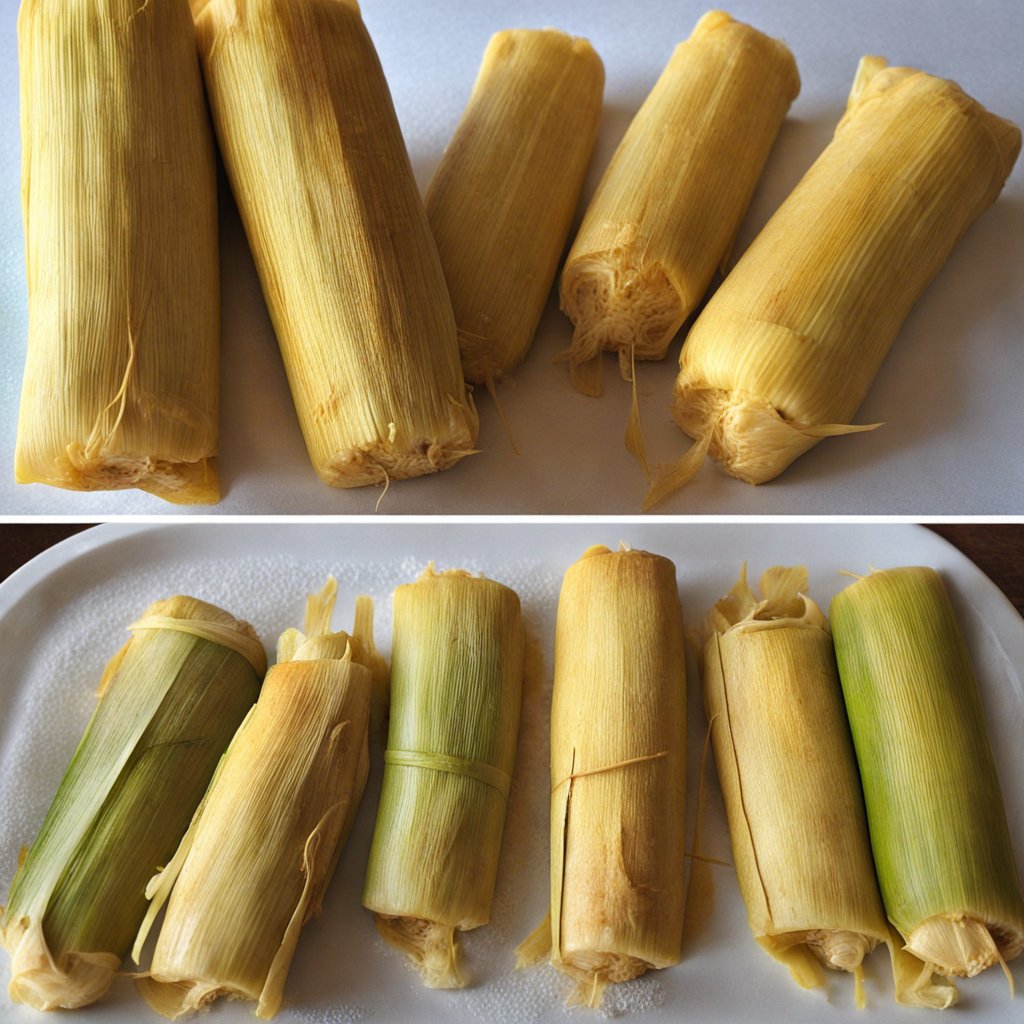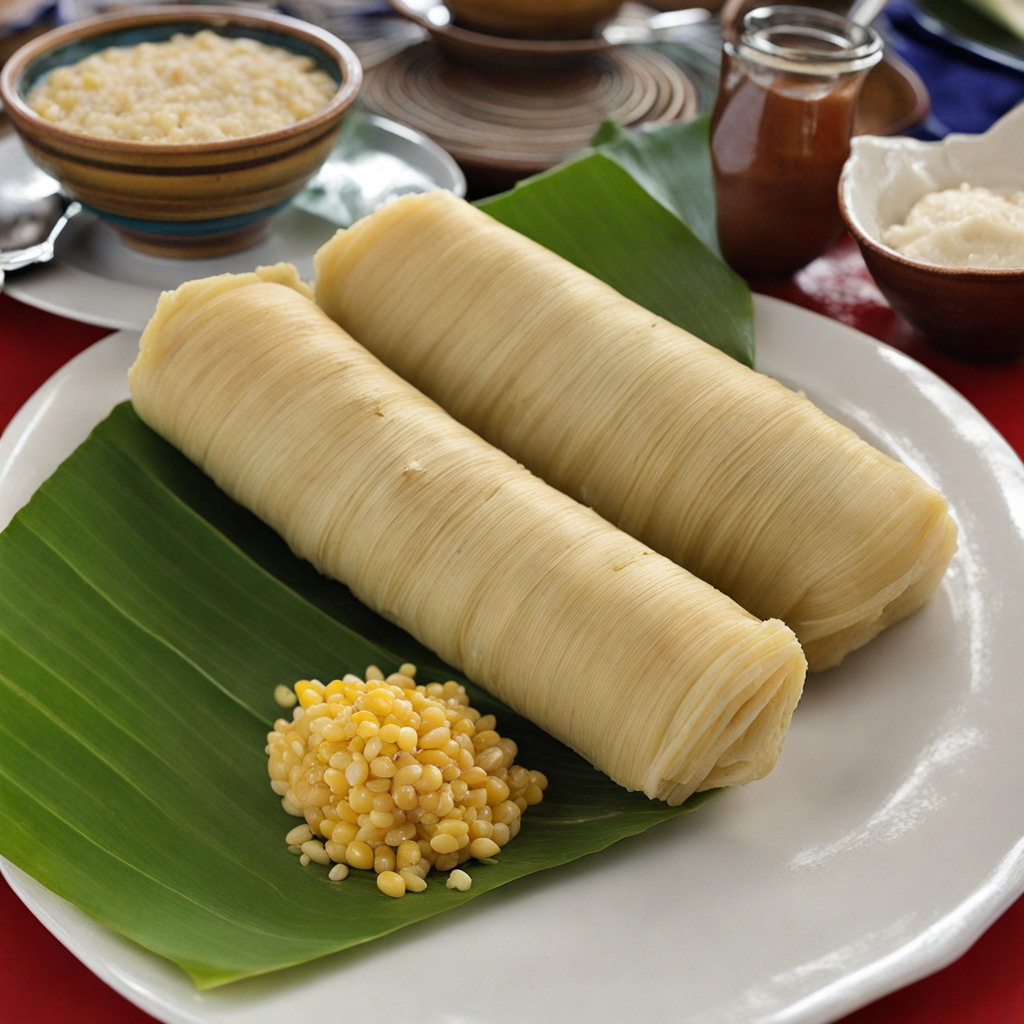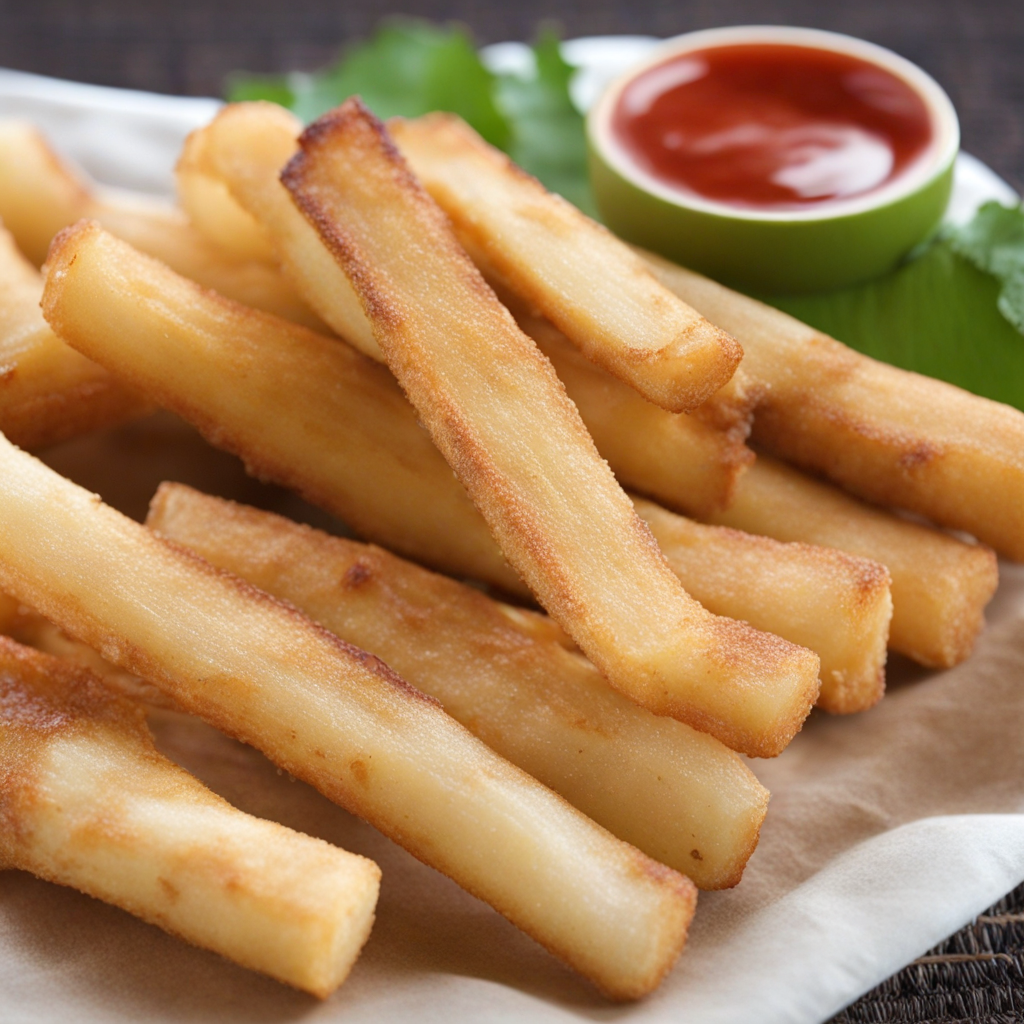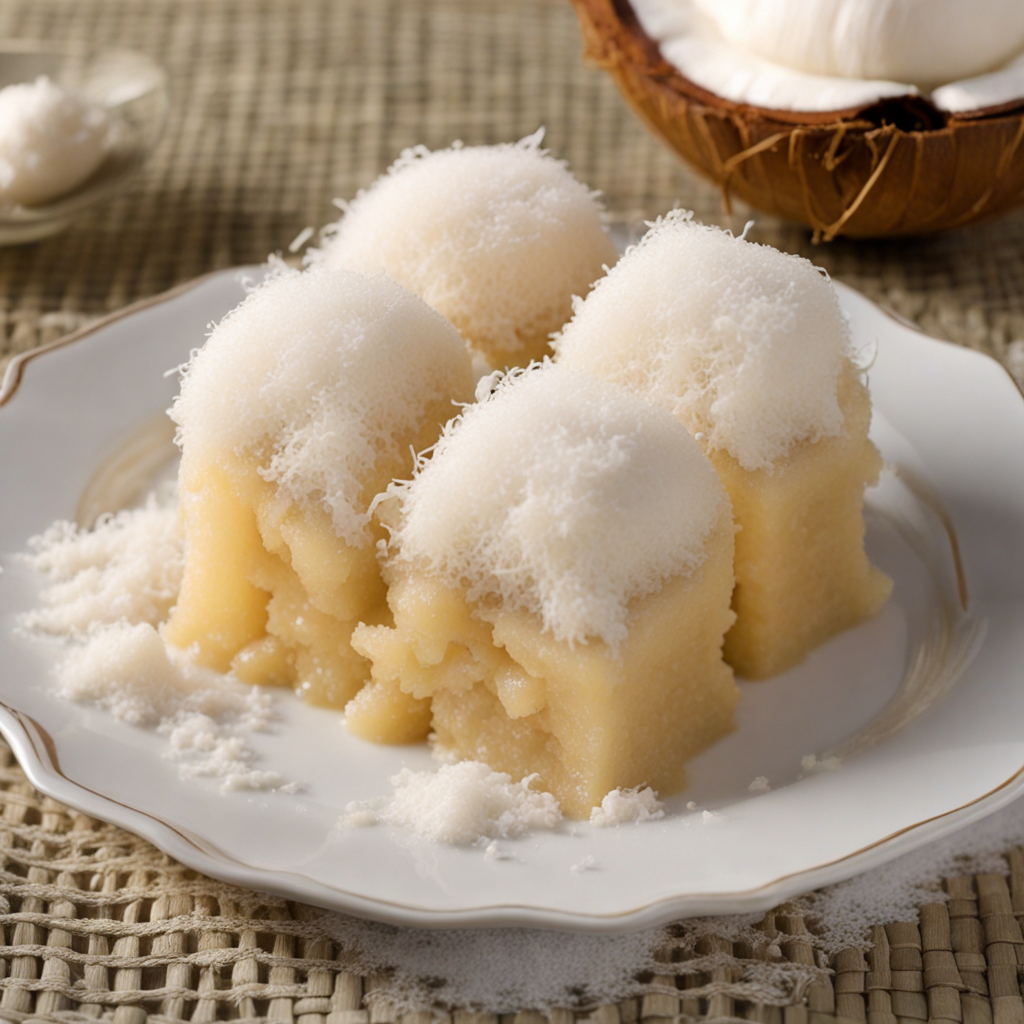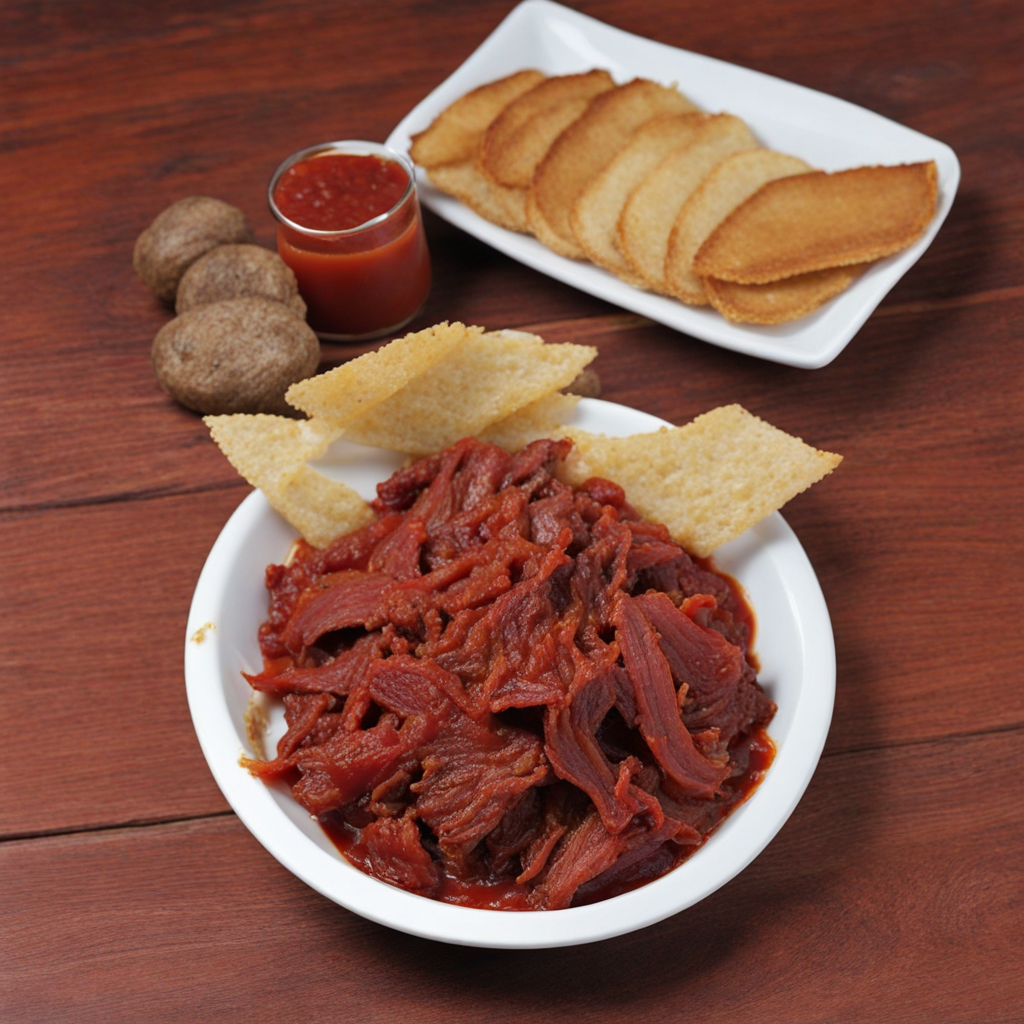Bollo
Bollo is a delightful Panamanian treat that embodies the country's rich culinary heritage. Made primarily from corn, these tasty morsels are a popular snack or side dish that can be enjoyed in various settings. The base of Bollo is a simple yet flavorful corn dough, crafted from fresh corn that is ground and mixed with a touch of salt. This combination creates a soft, slightly sweet, and earthy flavor that is both comforting and satisfying, making it a staple in many Panamanian households. Traditionally, Bollo is wrapped in banana leaves and steamed, which infuses the dish with a subtle aroma that enhances the overall experience. The steaming process gives the Bollo a unique texture—dense yet moist—that perfectly complements its flavor profile. In some variations, ingredients such as cheese, herbs, or spices may be added, introducing layers of taste and making each bite a delightful surprise. The versatility of Bollo allows it to be paired with various dishes, from savory stews to sweet desserts, making it a beloved component of Panamanian cuisine. As you explore Bollo, you will find that it is not just about the taste but also about the cultural connection it represents. Often enjoyed during family gatherings, festivals, or casual get-togethers, Bollo serves as a reminder of Panama's agricultural roots and communal spirit. Whether enjoyed plain or with a dollop of sauce, this delicious corn-based treat is sure to tantalize your taste buds and transport you to the vibrant streets of Panama.
How It Became This Dish
The History of Bollo: A Culinary Journey through Panama Bollo, a traditional Panamanian dish, is a vibrant testament to the rich tapestry of cultural influences that have shaped Panama's culinary landscape. While seemingly simple, this corn-based dish holds deep roots in the history and traditions of the region, reflecting the confluence of indigenous practices, colonial influences, and the diverse communities that have settled in Panama over the centuries. #### Origins The origins of bollo can be traced back to the indigenous peoples of Panama, particularly the Ngäbe-Buglé and Kuna tribes, who have cultivated maize (corn) for thousands of years. Maize was a staple in the diets of many Mesoamerican cultures, revered not only as a food source but also as a sacred element in religious and cultural rituals. The indigenous populations used every part of the maize plant, and the preparation of corn-based dishes became a cornerstone of their culinary practices. The traditional method of making bollo involves grinding corn into masa (dough) and wrapping it in plantain leaves before steaming it. This cooking method is reminiscent of other indigenous dishes across Latin America, such as tamales in Mexico or humitas in the Andes. The use of plantain leaves not only imparts a unique flavor to the dish but also showcases the sustainable practices of indigenous cultures, utilizing local resources to enhance their cuisine. #### Cultural Significance Bollo is more than just a dish; it is a symbol of community and cultural identity in Panama. The preparation of bollo is often a communal activity, bringing families and neighbors together. During celebrations, festivals, and gatherings, bollo is a staple dish that embodies the spirit of sharing and togetherness. It is common to see women gathering to prepare large batches of bollo, often accompanied by lively conversations and laughter. In addition to its communal significance, bollo also plays a role in the culinary identity of Panama. The dish has evolved over time, adapting to the ingredients and influences brought by various waves of migration. The Spanish colonial period introduced new flavors and techniques, leading to the incorporation of other ingredients like cheese, meats, and spices into the bollo recipe. This adaptability highlights the resilience of Panamanian cuisine, which has embraced change while staying true to its roots. #### Development Over Time As Panama's cultural landscape evolved, so did the recipes and variations of bollo. The arrival of African slaves in the 16th century added another layer of influence to the culinary practices in Panama. The African community contributed their own techniques and flavors, further enriching the gastronomic heritage of the region. Today, bollo can be found in various forms, each with its unique spin depending on the region and the community preparing it. In the central provinces of Panama, for example, bollo is often made with a mixture of corn and cheese, resulting in a creamy texture that is beloved by locals. In coastal areas, bollo de pescado (fish bollo) has emerged, utilizing the abundance of fresh seafood in the region. Here, the bollo is often filled with fish or seafood, reflecting the maritime culture of the Panamanian people. The versatility of bollo is a testament to its enduring popularity. It can be served as a side dish or as a main course, and it is often accompanied by salsas, stews, or fried plantains. In recent years, the dish has gained recognition beyond Panama's borders, with food enthusiasts and chefs showcasing the unique flavors of bollo in culinary festivals and pop-up events. #### Bollo in Modern Panama In contemporary Panama, bollo remains a beloved comfort food, representing both tradition and innovation. Street vendors often sell bollo at bustling markets, where locals and tourists alike can indulge in this flavorful dish. Food trucks and casual eateries have also embraced bollo, offering creative variations and fusions that appeal to modern palates. The rise of culinary tourism in Panama has further elevated the status of bollo, with travelers eager to experience authentic Panamanian flavors. Cooking classes and food tours often include bollo as a highlight, allowing participants to engage with local traditions and learn about the significance of this beloved dish. As a result, bollo is not only a staple of Panamanian cuisine but also a cultural ambassador, bridging gaps between communities and showcasing the rich history of the region. #### Conclusion Bollo is more than a simple corn dish; it embodies the essence of Panama's culinary heritage. From its indigenous roots to its modern interpretations, bollo reflects the diverse influences that have shaped Panamanian culture. It serves as a delicious reminder of the importance of community, tradition, and adaptability in the face of changing times. As Panama continues to evolve, bollo remains a steadfast symbol of its rich history and cultural significance. Whether enjoyed at a family gathering, a street market, or a fine dining establishment, bollo is a dish that tells a story—a story of resilience, community, and the enduring love of food. In every bite, one can taste the legacy of generations past, making bollo an essential part of Panama's culinary narrative.
You may like
Discover local flavors from Panama


